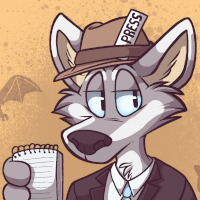Review – Furry Nation: The true story of America’s most misunderstood subculture, by Joe Strike.
by Patch O'Furr
 Furry Nation: The true story of America’s most misunderstood subculture, by Joe Strike.
Furry Nation: The true story of America’s most misunderstood subculture, by Joe Strike.
Cleis Press, October 2017, paperback $17.95 (288 pages), Kindle $10.99.
Here’s what I wrote for a cover blurb:
Like herding cats, gathering the history of furry fandom has been called impossible. Furries love impossible things, so this is long overdue. I’m happy to say it was worth the wait. Joe Strike puts solid ground under the legs of the Furry Nation – genre, subculture, and yes, even kink – with his experience of watching it grow. This book is for original 1980’s fans, new ones looking back, and outsiders drawn to the weird coolness of talking animals. There’s many ways to get into it, but this is a unique view of how furries are breaking out.
Joe’s book isn’t the perfect bible for everyone – but expecting that from one book is unrealistic. It’s just the kind of book that comes from a devout fan, and that’s why I recommend it.
I’ll summarize some reaction to the news that this book will exist: “It’s gonna suck! Who is Joe Strike?” – I knew who Joe was before I knew he was a furry, from his animation journalism. He does scriptwriting and his own comic too. He brings us a history that can live beyond bit-rot, supported by a firmly established publisher. Cleis has a 36-year history as “the largest independent sexuality publishing company in the United States.” It’s smart to focus on the word independent, which means open-minded support from the first ones to take the chance.


 A Dog’s View of Love, Life, and Death, by J. R. Archer
A Dog’s View of Love, Life, and Death, by J. R. Archer ArCANIS: A Modern Animal Tarot, by David DePasquale. Illustrated.
ArCANIS: A Modern Animal Tarot, by David DePasquale. Illustrated. Avaritia: A Fable, by M.D. Westbrook
Avaritia: A Fable, by M.D. Westbrook Garbage Night, by Jen Lee. Illustrated.
Garbage Night, by Jen Lee. Illustrated. The Unbeatable Squirrel Girl: Squirrel Meets World, by Shannon Hale & Dean Hale. Illustrated by Bruno Mangyoku.
The Unbeatable Squirrel Girl: Squirrel Meets World, by Shannon Hale & Dean Hale. Illustrated by Bruno Mangyoku. The Latte Segment, by Zoe Landon
The Latte Segment, by Zoe Landon D’Arc: A Novel from the War With No Name, by Robert Repino. Illustrated by Sam Chung and Kapo Ng.
D’Arc: A Novel from the War With No Name, by Robert Repino. Illustrated by Sam Chung and Kapo Ng. Tucker Grizzwell’s Worst Week Ever, by Bill Schorr and Ralph Smith
Tucker Grizzwell’s Worst Week Ever, by Bill Schorr and Ralph Smith